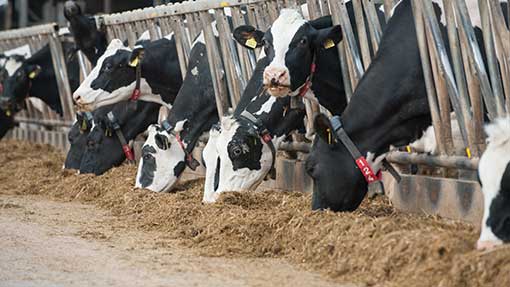Farmers warned over varied first-cut silage quality

A wide range of first-cut grass silage qualities as a result of a big spread in harvesting dates means it is vital dairy farmers get clamps analysed, nutritionists have warned.
Farmers who took early first cuts in April and May have a good base from which to maximise milk from forage, however those who harvested crops later in the season could face a potentially challenging winter.
Results from 400 samples analysed by Trouw Nutrition GB show a wide range of quality, with an average dry matter (DM) of 29% – 3.4% lower on the year.
See also: Ten top tips for preparing for silage making
However, the range is wide, with DM varying from 15% to 59%.
Energy density is slightly lower at 10.7MJ/kg DM of metabolisable energy (ME) compared with 11MJ/kg DM of ME in 2013.
Trouw Nutrition GB ruminant manager Adam Clay said: “The lower DM content and energy levels mean that cows will require more fresh weight of forage a day to match milk from forage production last winter.
“Also it is important to acknowledge that as the season progresses so average analyses will tend to decline as more, later harvested crops are received.”
Earlier cuts
However, early indications from 113 silage samples analysed by Mole Valley Feed Solutions show a more encouraging picture. Dry matter and ME are at similar levels to last year, at 31.8% and 11.5ME respectively. However, lactic acid levels are higher while ammonia levels are lower.
This means silages have been made and preserved well, said Mole Valley senior nutritionist Robin Hawkey.
With these results reflecting those who cut in late April into early May, it is likely these quality results will improve even further as they will have longer to ferment, he added.
But Dr Hawkey stressed all producers should be assessing first cut silage stocks now in order to prepare a feed budget for the year ahead.
“Go and measure the clamp and do a feed budget, but also analyse stocks and check dry matter. DM is a significant calculation – two farmers may have the same size clamp, but one with 40% DM silage has twice as much as one with 20% DM.”
Dr Hawkey said this will help farmers plan requirements for second- and third-cut silages and help them to balance summer grazing with winter forage stocks.
If farmers have got a relatively poor crop of silage more onus is going to need to be put on making sure the best quality silage possible during the rest of the season.
Constituents
With many milk processors now rewarding for butterfat, milk contract choice is also another consideration when planning subsequent cuts.
“If your contract is now more constituents orientated, it may be worth taking second and third cuts a little stemmier to get the butterfats,” said Dr Hawkey.
However he stressed the importance of monitoring grass growth closely and ensuring quality is not compromised too much by cutting later.
A more comprehensive picture of silage analyses is expected later this summer.
